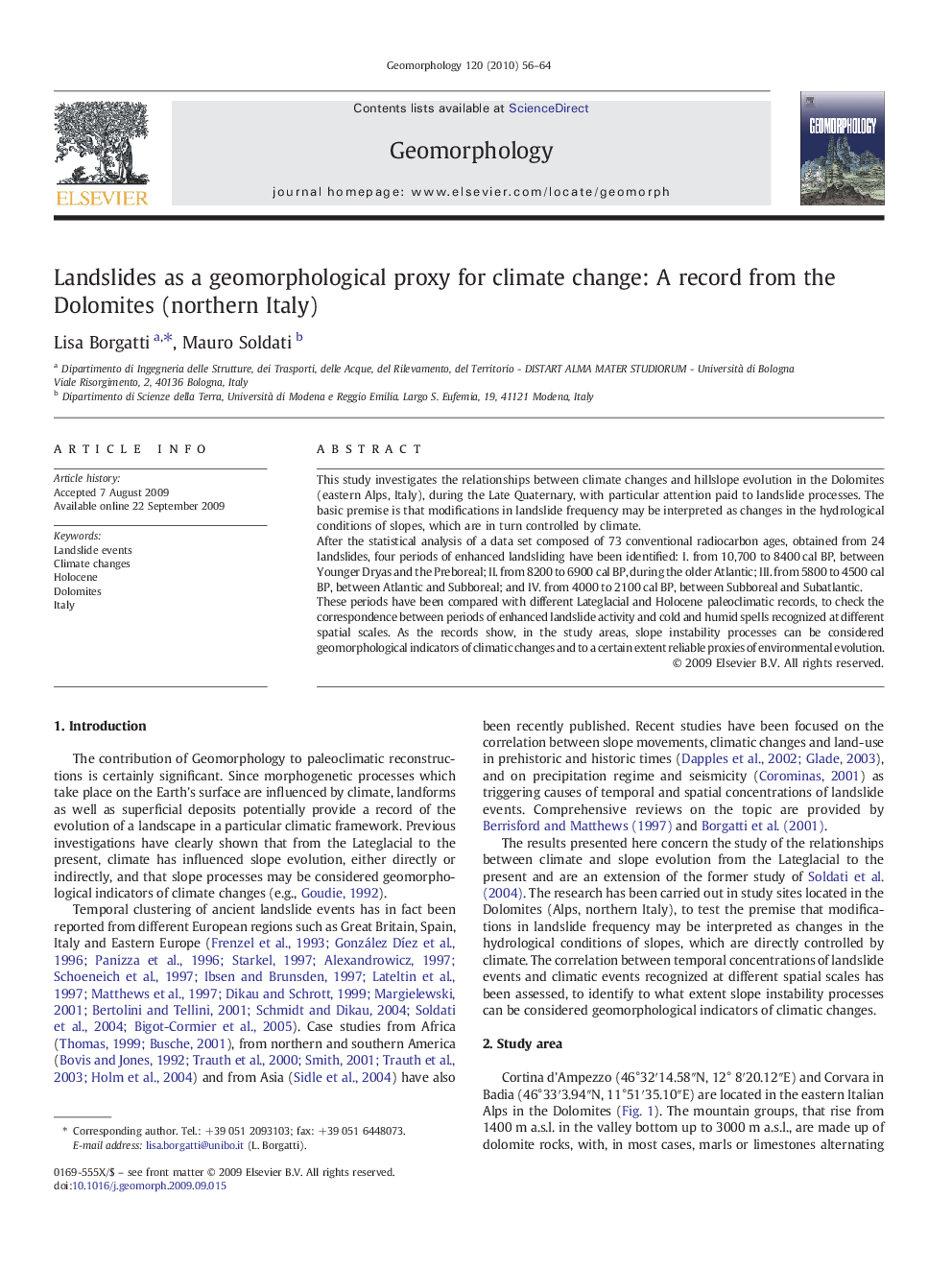| Article ID | Journal | Published Year | Pages | File Type |
|---|---|---|---|---|
| 4686002 | Geomorphology | 2010 | 9 Pages |
This study investigates the relationships between climate changes and hillslope evolution in the Dolomites (eastern Alps, Italy), during the Late Quaternary, with particular attention paid to landslide processes. The basic premise is that modifications in landslide frequency may be interpreted as changes in the hydrological conditions of slopes, which are in turn controlled by climate.After the statistical analysis of a data set composed of 73 conventional radiocarbon ages, obtained from 24 landslides, four periods of enhanced landsliding have been identified: I. from 10,700 to 8400 cal BP, between Younger Dryas and the Preboreal; II. from 8200 to 6900 cal BP, during the older Atlantic; III. from 5800 to 4500 cal BP, between Atlantic and Subboreal; and IV. from 4000 to 2100 cal BP, between Subboreal and Subatlantic.These periods have been compared with different Lateglacial and Holocene paleoclimatic records, to check the correspondence between periods of enhanced landslide activity and cold and humid spells recognized at different spatial scales. As the records show, in the study areas, slope instability processes can be considered geomorphological indicators of climatic changes and to a certain extent reliable proxies of environmental evolution.
